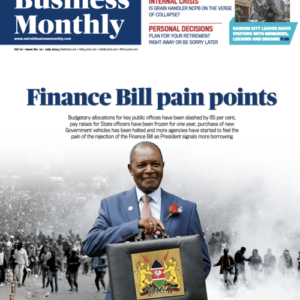D uring COVID, customers’ expectations and behaviors have changed the retail landscape: traditional competitive advantages are eroding, channel preferences are evolving, and technological sophistication has become a basic requirement.
Over the past two years, one of the biggest revelations has been that many retailers are poorly prepared to deal with disruptions, with devastating impacts on the industry. In Kenya, we witnessed at least two major retail stores go under, and many today find themselves in the uncomfortable position of living though external change that they cannot internally match. Those that insist on sticking with traditional systems, talent management structures, and operations have witnessed roadblocks that constrict revenue and growth.
As growth becomes harder to capture through traditional channels and inducements, retailers should look more closely at their customer data to identify opportunities to inspire growth. This shift requires not only finding and using more customer insights but also building more holistic and customer-leaning perspectives. And, as different global experiments have shown, retailers can give life to their outdated operating models by undertaking enterprise-agility transformations to adapt to the ever-evolving retail sector.
Download Nairobi Business Monthly Latest Edition
Technology advancement needed
Tools that were once great add-ons, such as mobile payments and apps, have become table stakes in the era of omnichannel retail. Now they are prominent factors in how customers choose to make purchases. The pace of technological advancement, the development of new ways of interacting with customers, and the rate of customer-driven demands will continue to accelerate, forcing retailers to constantly adapt. New frontiers of technology, such as the Internet of Things, artificial intelligence, augmented reality, and new social platforms for customers, will force retailers to react based on how customers use and interact with them. Under these circumstances, retailers must have an adaptive technology backbone in place.
Innovative retailers are forming teams to improve customer journeys. They compile the resources that are required to deliver an omnichannel experience throughout the customer journey, mixing stores, operations, and digital capabilities with customer insights and analytics, user-experience data, and front- and back-end development. For example, The Warehouse Group created a “tribe” comprising a loyalty team, an e-commerce platform team, and an app team to focus on improving customer engagement by looking at all engagement assets together, as well as to update store design and “feel.” With this tribe strategy, the teams found they could provide a more omnichannel experience.
Agile retailers have evolved their structures to create teams that are accountable for delivering certain customer outcomes from end to end, which involves mixing resources that traditionally would sit in different functions. A Latin American retailer redesigned its category-management teams to hold more extensive responsibilities along the value chain by combining buying, assortment, merchandising, logistics, private-label, and customer-insights capabilities into one team.
An agile enterprise will be faster, more responsive, more focused on performance, and better able to attract talent than a traditional retailer. The good news is that traditional retailers that have not yet transformed still have the opportunity to surpass even digital native retailers. The pressing question for retailers is, “if not now, when?”


